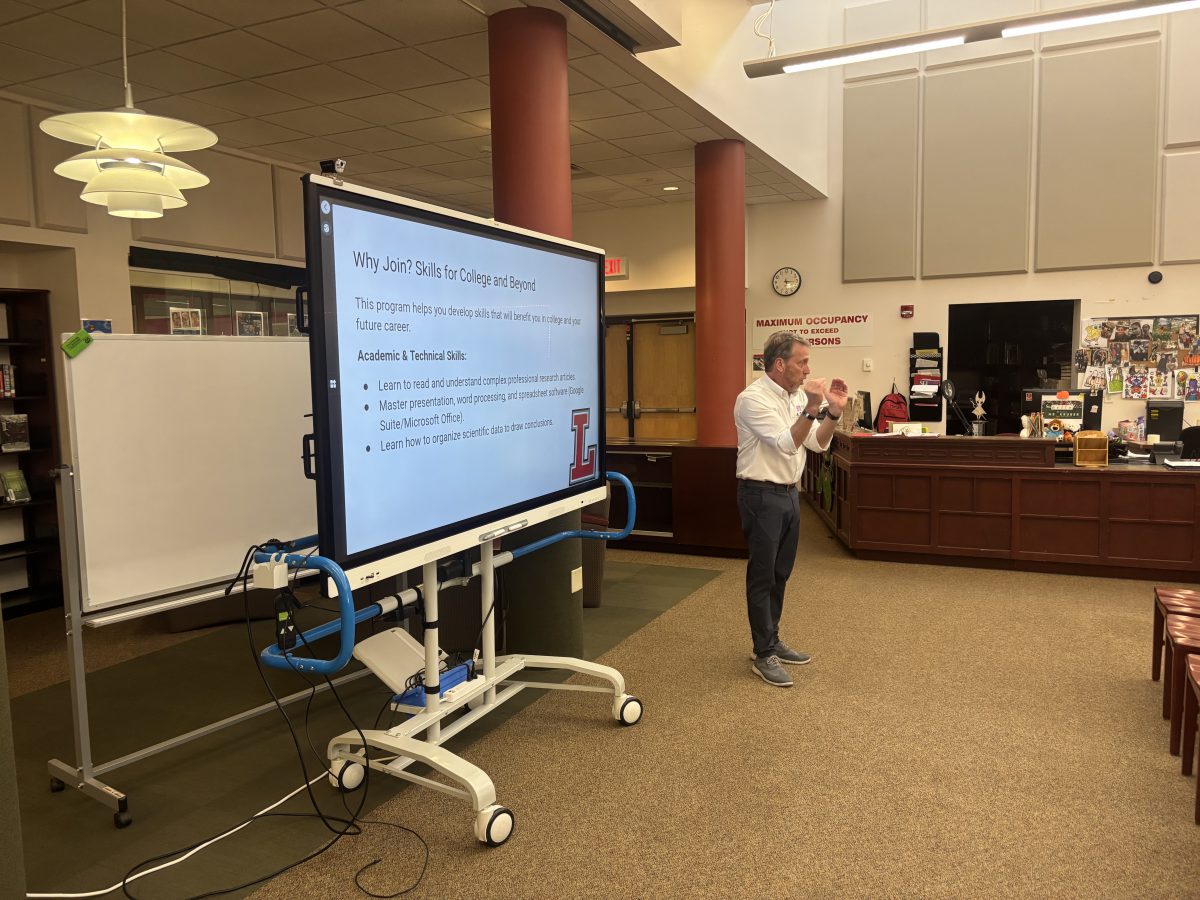Alum shares information on Science Research Program coming to LCSD

Liberty alumnus Michael Blueglass returned to his alma mater Thursday, Oct. 16, to share more information about the Science Research Program, which will be introduced to the district next school year.
The three-year program provides high school students the chance to conduct STEM research at a college or graduate level.
The course goes beyond core STEM classes, with significant work also conducted during the summer. Successful completion could earn students up to 12 college credits through SUNY Albany.
Mr. Blueglass, who is the founder of the Advancing STEM Research Teaching group, highlighted many benefits of the program, including improving academic and technical skills, growth in professional and personal skills as well as being a major advantage in college admissions.
The program will begin during a student’s sophomore year, but interested ninth-graders must complete a series of prerequisite steps to be accepted. Students are paired with mentors in the field in their area of research to give them direct field work and research opportunities Some students may also work as partners or in groups, as some fields such as environmental, engineering, and behavioral projects are often better suited for teams. However, many lab-based mentors in biological or medical fields are not willing to take on a team of students.
Students who participate don’t necessarily need to be planning to pursue a STEM-based career. “What matters is being 100% dedicated to the project,” Mr. Blueglass said.
First year
During the first year, sophomores will narrow down the focus of their project, with help from the teacher, often choosing a topic based on their interests, knowledge and opportunities.
Research areas include animal science, astronomy, behavioral and social sciences, biochemistry and cellular biology, chemistry, computer science and systems software, engineering, environmental science, mathematics, medicine and health, neuroscience and robotics and intelligent machines.
The initial year will focus on gaining knowledge, including how to use professional scientific databases and research tools, studying on their desired topic and presenting information to the class. Once students gain enough knowledge on their chosen topic, they will find a mentor in their field.
Second and third years
The second and third years of the program is when the work will kick into high gear, with most of the hands-on research taking place during the summers before the junior and senior years, in the mentor’s lab or at home or school with the mentor’s help. During the school year, the teacher will meet with the class daily and with each student to check progress and set goals.
Each student will present their work by creating a poster and slide presentation as well as writing a formal research paper.
That work will prepare the students to enter prestigious science competitions as a requirement of the program, such as the Regeneron Science Talent Search, the Junior Science & Humanities Symposium, and the Regeneron International Science and Engineering Fair. Some major senior-level competitions, like the Regeneron STS, do not allow team projects.
Time and travel
The program requires a significant commitment of time and work ethic, especially during the summer when most of the research is conducted. Depending on the project, it may also require extensive travel.
Medical or lab-based projects often require a five-day-a-week commitment for seven or eight weeks at locations throughout the region.
Environmental projects will typically require a five-day-a-week commitment for four or five weeks, followed by several more weeks of half-days, often at locations throughout the region.
Engineering, physics or psychology projects may offer more flexibility, allowing students to work from home and meet with a mentor one or two days per week.
Students who cannot travel can consider home-based projects (e.g., math, computer science or survey-based psychology), but these still require the same overall time investment.
For more information about the project, see Mr. Blueglass’ presentation, or call the high school office at 845-292-5400, ext. 2000.

